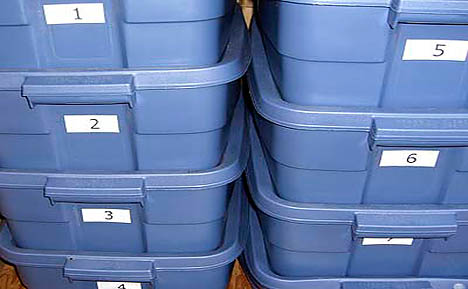FOOD STORAGE 101, Inventory
Maintaining a food storage inventory will help optimize your emergency preparedness planning of food preps. An inventory may sound simple enough, but it takes some considerable work in the beginning followed by the diligence to maintain the system.
If you have already stored away a quantity of food preps without an inventory, it will take some effort to document what you have. If you are just starting out with building food storage, it will be simpler and a good habit to develop. The effort will be well worth it for a number of reasons…
FOOD STORAGE ORGANIZATION
The way I look at it, organization is the key to optimization.
One way to go about organizing your food storage preps is to keep ‘like things’ together. Many of us probably do this by instinct anyway, but it doesn’t hurt to mention it. It certainly will make things much easier to catalog and inventory if all your cans of beef stew are all in one place, for example.
Soups are side by side with broth, bullion cubes etc. All of the baking items are stored together. Pasta is stored with sauces and canned tomatoes. The various types of beans are together. The spices and condiments are together… You get the idea.
Initially when your food storage inventory is somewhat small, you probably have your foods on shelves or sorted in locations that are visible to you. This keeps things simple for obvious reasons. A problem develops when you begin to accrue more than what can be stored on your shelves or in your cupboards. What then?
At this point you need to keep them in containment. Boxes, buckets, bins, whatever…
Once you begin doing this, you will very quickly lose sight (literally) of your inventory and what you have in your food storage. This is where organization and inventory control becomes important. At this point you really need to start a list if you haven’t already.
The methods that you use to store excess food vary according to one’s own storage space restrictions, willingness to spend$, and opinion as to what works best for them. For us, we use a mixture of boxes, 5-gallon buckets, and storage bins to hold our excess food storage.
We label the outside of these containers with either numbers (which translate to food groups on a spread sheet or list) or the name itself. If you number things, it will appear to others as inconspicuous. If you name everything, others will know that you have all that food. This may or may not be important to you depending on who comes into your home. OPSEC applies here…
The process of inventory also involves using a Sharpie marker to write the month/year on newly purchased items. This enables a first-in, first-out food rotation plan.
The method of recording your food inventory should be whatever works best for you. If you’re into using spreadsheets on a PC, then that may work better for you. Be sure to print out your inventory form time to time…
You may decide to keep a hand written notebook, with each page as a food group. 50 cans of this, 38 jars of that, 25 boxes of that other thing… etc.
The point is that when you have a list of what you have, then it becomes easy to discover the holes where you may be lacking. It also allows you to estimate the equivalent calorie count and the diversity of nutrition that you have on hand. It enables you to put together a better overall food storage plan, and it enables a better food rotation plan to minimize eventual spoilage.

